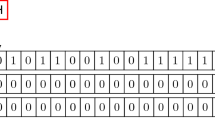Abstract
The accelerated Turing machine (ATM) is the work-horse of hypercomputation. In certain cases, a machine having run through a countably infinite number of steps is supposed to have decided some interesting question such as the Twin Prime conjecture. One is, however, careful to avoid unnecessary discussion of either the possible actual use by such a machine of an infinite amount of space, or the difficulty (even if only a finite amount of space is used) of defining an outcome for machines acting like Thomson’s lamp. It is the authors’ impression that insufficient attention has been paid to introducing a clearly defined counterpart for ATMs of the halting/non-halting dichotomy for classical Turing computation. This paper tackles the problem of defining the output, or final message, of a machine which has run for a countably infinite number of steps. Non-standard integers appear quite useful in this regard and we describe several models of computation using filters.
Opsomming
Die versnelde Turing-masjien (VTM) is die trekperd van hiperberekening. In sekere gevalle word veronderstel dat ’n masjien wat aftelbaar oneindig aantal stappe uitgevoer het, ’n interessante probleem soos die Tweelingpriemvermoede sou beslis het. ’n Mens lê egter sorg aan die dag om ’n uiteensetting van òf die potensiële benutting van oneindig veel ruimte deur ’n dergelike masjien òf die probleem (indien slegs eindig veel ruimte gebruik is) om ’n eindtoestand te definieer vir masjiene wat optree soos Thomson se lamp. Die outeurs is onder die indruk dat te min aandag gegee word aan die invoer van ’n deeglik gedefinieerde eweknie van die halt/niehalt-tweespalt in klassieke Turing-berekening. Hierdie artikel takel die probleem van definisie van die uitvoer, of finale boodskap, van ’n masjien wat ’n aftelbaar oneindige aantal stappe uitgevoer het. Die niestandaard-heelgetalle skyn nuttig te wees in hierdie verband en ons beskryf ’n aantal berekeningsmodelle met filters.
Similar content being viewed by others
Notes
Simile used by Martin Davis in the Notices of the AMS, May 2008, with regard to the continuum hypothesis.
This point is also made clearly by Calude and Staiger (2009) who discuss how any interesting accelerated machine will use an infinite amount of tape.
References
Andréka H, Németi I, Sain I (1982a) A complete logic for reasoning about programs via nonstandard model theory I. Theor Comput Sci 17(2):193–212
Andréka H, Németi I, Sain I (1982b) A complete logic for reasoning about programs via nonstandard model theory II. Theor Comput Sci 17(3):259–278
Calude CS, Staiger L (2009) A note on accelerated Turing machines. Technical report CDMTCS-350, Centre for Discrete Mathematics and Theoretical Computer Science
Calude CS, Calude E, Dinneen MJ (2006) A new measure of the difficulty of problems. J Multip Valued Log Soft Comput 12(3–4):285–307
Cohen RS, Gold AY (1977) Theory of ω-languages. I. characterizations of ω-context-free languages. J Comput Syst Sci 15:169–184
Comfort W (1977) Ultrafilters: some odd and some new results. Bull Am Math Soc 83:417–455
Cotogno P (2003) Hypercomputation and the physical Church-Turing thesis. Br J Philos Sci 54(2):181–223
Davis M (2006) Why there is no such discipline as hypercomputation. Appl Math Comput 178(1):4–7
Hamkins JD, Lewis A (2000) Infinite time Turing machines. J Symb Log 65:567–604
Hamkins JD, Seabold DE (2001) Infinite time Turing machines with only one tape. Math Log Q 47:271–287
Hogarth M (1992) Does general relativity allow an observer to view an eternity in a finite time? Found Phys Lett 5(2):173–181
Ord T (2006) The many forms of hypercomputation. Appl Math Comput 178(1):143–153
Richter MM, Szabo ME (1988) Nonstandard methods in combinatorics and theoretical computer science. Studia Logica 47(3):181–191
Robinson A (1996) Non-standard analysis. Princeton landmarks in mathematics and physics. Princeton University Press, Princeton
Soare RI (2007) Computability and incomputability. In: Computation and logic in the real world. Springer, Berlin/Heidelberg
Thomson J (1954–1955) Tasks and super-tasks. Analysis 15:1–13
Author information
Authors and Affiliations
Corresponding author
Additional information
Abstract in Afrikaans: This abstract is provided by the author(s), and is for convenience of the users only. The author certifies that the translation faithfully represents the official version in the language of the journal, which is the published Abstract of record and is the only Abstract to be used for reference and citation.
Rights and permissions
About this article
Cite this article
Potgieter, P.H., Rosinger, E.E. Output concepts for accelerated Turing machines. Nat Comput 9, 853–864 (2010). https://doi.org/10.1007/s11047-010-9197-x
Published:
Issue Date:
DOI: https://doi.org/10.1007/s11047-010-9197-x




